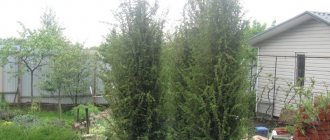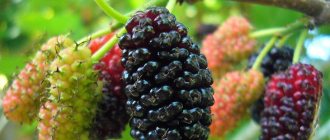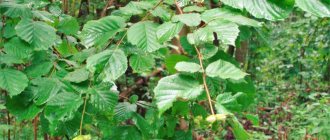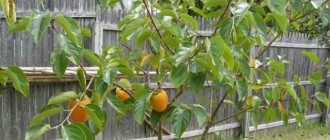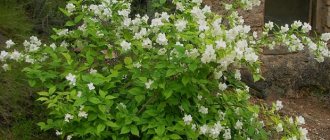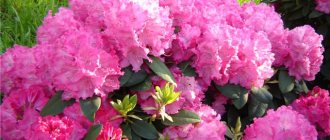Hazelnuts in the Urals: characteristics of the culture
Before getting acquainted with the method of growing the crop, let’s consider the main characteristics and distinctive features of hazelnuts:
- The height of the bush culture can reach 4-5 meters.
- The leaves on hazelnut shoots are oblong, oval in shape and dark green in color.
- The crop bears fruit with edible nuts that have an oblong shape and a brown shell.
- The fruits appear on the bush at the end of August.
- Hazelnut is a monoecious, dioecious crop.
- A tree or shrub bears fruit 4-5 years after planting.
- The fruit nucleolus consists of two cotyledons.
- Due to the peculiarities of the climate of the Urals, the hazelnut bushes planted in this area bear fruit rather sparingly.
- The largest harvest from the bush can be harvested in the 8-14th year of the crop’s life.
Thanks to new approaches in agricultural technology, it has become possible to grow heat-loving crops in more difficult conditions. In the southern regions of the Urals, Chelyabinsk region and others, the cultivation of grapes, plums, apricots, as well as a cultivated type of hazel - hazelnuts, is actively developing.
The most frost-resistant varieties, such as Tambovsky early and Tambovsky late, Pamyat Yablokova, Ivanteevsky red, give excellent harvests, although they require more careful care, especially in winter. Thus, without covering the male inflorescences for the winter under snow cover, it is unlikely that a nut harvest can be expected. With proper planting and care, within a few years the planting field will be able to enjoy tasty and healthy nuts. Apart from some fear of severe frosts, hazelnuts are not capricious, so the process of planting and growing them, although it requires knowledge of some nuances, is not too complicated and accessible even to novice gardeners. We will tell you further about how to grow hazelnuts in the Urals.
Manchurian nut: cultural features
What kind of crop is this that enjoys special respect among gardeners, capable of improving the design of the garden, its microclimate, serving as medicine and giving wonderful healthy fruits?
Manchurian nut (Juglans mandshurica Maxim)
- a representative of the Far Eastern fauna, a large spreading tree, reaching a height of 25-30 m, can withstand temperatures down to -50 ° C, has a short growing season, and therefore can be cultivated in the most climatically unfavorable areas and on different soils. A clear proof of this is that it has taken root very well even in my heavy swamp. The tree is wind-resistant because it has a powerful root system and forms a long taproot, which increases drought resistance. However, in areas with close groundwater, when planting a seedling, this root still needs to be pruned. The plant has a smooth gray trunk, strong wood with a beautiful solid structure. It is used to make furniture and art products. The leaves are large, reaching a length of 1 m or more. It blooms with long male catkins and small female racemes. Sets 3-7 fruits per cluster. The fruits have a somewhat elongated shape with a pointed apex. In our climatic conditions it ripens by mid-September. It begins to bear fruit in the 6th year from planting, gradually increasing the yield. From one mature tree you can collect 30-40 kg of fruit.
In particularly harsh winters, the ends of young shoots may freeze, but this does not in any way affect the general condition of the trees.
Manchurian nut fruits
Walnut leaves are rich in essential oils, alkaloids, phytoncides, carotene, tannins and other beneficial substances. Fresh or dried leaves are used for medicinal purposes. They are collected in June and dried in the shade. Used in the form of decoctions and tinctures to prevent cerebral vascular sclerosis, and also as a general tonic, wound-healing agent. Medicines made from Manchurian nuts improve metabolism, help lower blood sugar, etc. They can also compensate for iodine deficiency in the human body.
Although the yield of pure kernel from the Manchurian nut is only 20-30%, its dietary and nutritional properties are priceless. They contain about 55% oil. I eat them fresh and also use them in cooking.
But not everyone succeeds in extracting the kernels by destroying the hard shell. But somehow they are splitting things up in China. I personally tried many times to split it with a hammer, mallet, or clamped it in a vice. In any case, the nut crumbled into small fragments, where the shell and kernel were mixed so that you didn’t want to choose.
Hazelnuts in the Urals: varieties
The most popular varieties of crops that can be grown in the climate of the Urals are the following types:
- Hazelnut "Galle". Was bred in Germany. A tall shrub, the height of which is up to 5.3 meters. The fruits of this variety are very large - 25-26 cm. Fruits in early October.
- Hazelnut "Barcelona". A tall shrub, the height of which is up to 5 meters. The leaves are dark green in color and covered with a thin layer of hairs on top. The variety tolerates frost well and produces a large harvest of fruit. The average size of the fruit is 23 cm.
- Cosford hazelnuts . This is a branched shrub with a lush crown. Fruits in September. Pollinator varieties for this type of crop are Galle and Lambert varieties.
- Hazelnuts "Warsaw Red". The variety was bred in Europe. Fruits in mid-September. The pollinator variety for this type of crop is the Galle variety.
- Hazelnut "Trebizond". Fruits with very large nuts (28-29 cm). The variety is distinguished by its high yield. It can be easily grown in regions where winter temperatures reach -30 degrees Celsius.
How to plant correctly
In order for the hazel tree to take root and bear fruit, it is necessary to comply with the conditions when planting the seedling.
What time to plant?
Hazel should be planted in autumn - early October
Important! There must be at least 20 days before the onset of frost, otherwise the plant will not take root.
Selection and preparation of a site
Hazel is very unpretentious to the soil, but swampy or sandy areas are destructive. Therefore, before planting, you should make sure that in the spring the melted snow will not flood the hazel tree.
In addition, the absence of groundwater near the soil surface is important. Preference should be given to humus, humus-rich, loose soils
For normal growth and fruiting, hazel requires a sunny side, protected from cold winds, so the best choice would be the western or southwestern part of the site, preferably fenced with a wall. If this is not possible, hedges will provide protection from the wind. They should be planted no closer than 5 meters from the nut.
Site preparation depends on the number of seedlings being planted. When planting several plants, it is recommended to dig the entire area deeply. Fertilize the planting holes with humus and mineral preparations (50 grams of potassium salt and 200 grams of superphosphate).
Planting process
Before planting, seedlings should be cut to 20-25 centimeters, and the roots should be dipped in a mixture of clay and manure. After that, start the process:
- the hazel is lowered into the hole, deepening the level of the root collar by 2-3 centimeters;
- carefully distribute the roots over the soil, covering them with loose soil and compacting them;
- Make an edge around the seedling and water it generously (20-25 liters);
- After moisture has been absorbed, the soil should be mulched with sawdust, leaves or peat.
When planting several seedlings, one must not forget about the distance, because hazel is planted for many years:
- rows – 5-6 meters;
- 4-6 meters between plants.
Where to plant hazelnuts in the Urals
Choosing the right landing site is already half the success. When choosing a site, you need to understand that hazelnut bushes are quite spreading and grow very quickly. That is why they need enough space. In this case, the area for planting hazelnuts should be well lit and protected from drafts and north winds. The sun's rays significantly accelerate the growth of the shrub and significantly improve its productivity.
Rules for choosing a landing site:
- Almost any soil is suitable for growing hazelnuts, except those that are too salty and dry, as well as swampy. The most preferable for the plant is fertile soil with neutral acidity.
- If the soil is too acidic, it is deacidified by adding 0.5 kg of lime per 1 m2 of land. On viscous and dense chernozems, it is recommended to carry out drainage measures. Thus, before planting hazelnuts in the Southern Urals, it is recommended to dig up the area with the addition of sand or peat. On soils that are too dense and viscous, the plant develops very poorly.
- Hazelnuts grow well both on flat areas and on slopes. In the latter case, the superficial root system strengthens the soil, preventing landslides.
- Since this is a fairly moisture-loving crop, a high groundwater level is not a hindrance for its cultivation. It is allowed to plant hazelnuts near water bodies. However, areas with excessive stagnation of water or heavy spring floods should be avoided.
Peculiarities of growing hazel in this region
It is difficult to achieve annual fruiting of common hazel in the Urals. It depends on weather conditions. Flower buds are threatened by return frosts. Male inflorescences freeze slightly in winters with little snow.
Site selection
Hazel planted in a draft will not bear fruit. The planting site is chosen taking into account the wind rose. The seedling must be protected from the north and north-west wind. In the shade of trees and buildings it grows poorly and does not bear fruit; it tolerates light partial shade.
Hazel does not like swampy and dry soil. Does not grow well if groundwater is high. Varietal varieties develop better on humus-carbonate soils. In the conditions of the Urals, it is recommended to grow hazel on the eastern and northeastern slopes.
Boarding time
In the Urals, hazel seedlings are planted in the spring before the buds open. In the fall, the site is prepared for planting. They dig planting holes. As soon as the ground thaws, seedlings are planted. After the snow melts, the soil contains a lot of moisture, which promotes rooting.
Disembarkation scheme
The crown of the shrub is compact, but in an adult plant it occupies a large area. This is taken into account when landing. Planting holes are dug according to the following schemes:
With a denser planting, the feeding area and lighting level are insufficient for the normal development and fruiting of hazel.
Soil preparation
When choosing a planting site in the garden, the predecessor crop does not play a role. On slopes with an inclination angle of more than 10°, terraces are formed. They dig holes measuring 1 x 1.5 m. On flat areas - 0.5 x 0.5 m.
Lime is added to acidic soil in the fall (500 g/m²). For better aeration, humus and sand are added. It is recommended to add soil taken from under wild hazel bushes into the planting holes. It contains a symbiont mushroom. It protects the bush from diseases and promotes rapid absorption of nutrients.
Planting process
Seedlings in containers take root without problems. They cost more. When purchasing hazel with an open root system, check its quality
Pay attention to the condition of the roots. They must be fresh, undamaged, fibrous
Seedlings 1-1.5 m high are suitable for planting.
Before planting, the hazel is placed in water for 2-3 hours. To fill the hole, prepare a fertile substrate:
- garden soil taken from the top layer;
- superphosphate - 150 g;
- humus (compost) - 2-3 buckets;
- potassium salt - 50 g.
The mixture is poured in the form of a slide into the center of the planting hole. A hazel seedling is placed on it, the roots are covered with earth. The root collar is not buried. The shoots are shortened by 5-6 buds. 3-4 buckets of water are poured into the hole. The soil is mulched with humus.
How to plant hazelnuts in the Urals
Planting hazelnuts in the Urals is not a very tricky matter, however, it requires some knowledge about the peculiarities of the plant’s agricultural technology.
Boarding rules and procedures:
- So, they plant it at a sufficient distance from each other. The fact is that shrubs grow quite quickly and their crown takes up a lot of space. That is why it is necessary to maintain a distance of at least 4 meters between bushes. If the planting is planted as a natural hedge, then the bushes are planted closer to each other - at a distance of 2 m.
- To increase the productivity of hazelnuts, it is advisable to plant at least 3 different varieties on the site, which will pollinate each other. When growing a crop on an industrial scale, one wild hazel is planted per 10 individuals, which promotes cross-pollination.
- The hole for planting shrubs is prepared in advance (about 1 month in advance).
- The size of the planting hole is 0.7 x 0.7 m, depth 0.2 m.
- After its preparation, up to 10 kg of humus, 70 g of potassium sulfate and 200 g of superphosphate are poured inside, after which they are thoroughly mixed with soil.
- During planting, a small mound of soil is poured at the bottom of the hole and the roots of the seedling are carefully spread along its slopes. After this, the hole is covered with earth, slightly compacting it.
- Next, make a round hole around the trunk and fill it generously with water, after which it is mulched with sawdust or dry grass.
- After this, it is necessary to cut off the ground part of the seedling, leaving only 20 cm from the surface. They do this in order to speed up the rooting of the plant.
Collection and storage of fruits
All over the world, hazel is well known for its fruits - hazelnuts, also known as hazelnuts, are valued by culinary specialists in many countries for their bright, incomparable taste, rich chemical composition, including vitamins, minerals, amino acids and fatty acids, including polyunsaturated Omega - 6, as well as high nutritional value, allowing the product to be used as a meat replacement.
Did you know? The most expensive nut in the world is the Queensland nut, or macadamia: it is grown in Australia and costs at least $30 per 1 kg. Hazelnuts, due to their wider distribution, are valued approximately 12 times lower, although in reality they are in no way inferior to macadamia either in taste or in beneficial properties.
Hazelnuts can be harvested at different times. In general, nuts that have reached their full size but still retain the green color of the shell are quite suitable for consumption . Such fruits contain almost all the declared beneficial nutrients. But green hazelnuts are not suitable for long-term storage - if they are removed from the tree early, not only the shell, but also the kernel inside begins to dry out intensively.
The biological maturity of a hazelnut and, accordingly, its readiness for harvesting is determined by the acquisition of a characteristic brown or reddish color by the drupe . Usually in the Ural climate this happens at the very end of summer or beginning of autumn.
One of the advantages of hazelnuts over other types of nuts (for example, walnuts) is the ease of harvesting: since the plants are planted in dense rows and formed in the form of low bushes (no more than 3–4 m), and even inclined to the ground, it is very difficult to remove the fruits from them easily. And the plant’s yield can be quite good: if normal pollination and basic care are ensured, from one bush you can remove from 5 to 7 kg of nuts.
In addition, hazelnuts are stored very well : you just need to dry the fruits taken from the bush a little so that excess moisture evaporates from their surface, and put them in a dry place protected from light, where they will perfectly preserve their taste characteristics and nutritional value for 2-3 years .
Find out more about the storage features of hazelnuts and the shelf life of nuts.
Growing hazelnuts in the Urals
Although this plant cannot be called picky, in the first years of growth it needs careful care:
- Like many shrubs, hazelnuts love loose soil. In this case, it allows oxygen to pass through well and helps retain moisture. Naturally, there should be no weeds in the root circle.
- Weeding must be done very carefully so as not to damage the roots located at the surface.
- Watering must be taken very carefully. On the one hand, hazelnuts are a very moisture-loving plant, and on the other, an excess of moisture can have a negative impact on its growth. It is especially important to provide the shrub with enough moisture during summer drought.
- The average intensity of watering is 1-2 times a month. Hazelnuts grow well with drip irrigation.
- Shrub feeding is applied twice a year. The first fertilizing is carried out in the spring using organic fertilizers. To do this, make a nutritious cocktail consisting of 15-20 liters of humus or manure, compost with the addition of 100 g of nitroammophoska. Organic matter is added only for digging. In summer, when the bush is developing rapidly, you can add a little mineral fertilizer. It can be urea 0.5% and others. If there is a sufficient amount of organic matter, mineral fertilizers may not be applied. Excess nitrogen can provoke rapid growth of the bush and a decrease in its yield.
Nuances of plant care in Siberia
Despite the unpretentiousness of hazel, you should pay a little attention to it throughout the year to maintain its health and ensure high yields.
How to water
In the presence of natural precipitation, the plants are not watered. However, in dry weather you cannot do without watering. Otherwise, the hazel tree needs watering at least once a week. 50-80 liters of water are poured under the root of each plant.
Fertilizer
Full, harmonious growth of hazel is possible only with sufficient nutrients. If fertilizers were applied according to the norms during planting, then fertilizing can begin at 3-4 years of age.
For the season you must pay:
- in spring, after the snow melts - 120-140 g of nitroammophoska;
- when the kidneys are swollen - 20-30 g of urea;
- after the formation of ovaries - 20-30 g of ammonium nitrate;
- in the fall, at the end of the growing season - 50 g of superphosphate, 20-30 potassium salt, 3 kg of rotted manure.
With age, the amount of applied compounds increases. However, you cannot overfeed the plant: this will lead to a decrease in yield.
How to care during flowering
Hazel is a wind-pollinated monoecious crop. Male flowers - catkins, female - buds with reddish pubescence, bloom in Siberia in May.
In calm weather, pollination is carried out artificially by shaking the branches of the plant. Otherwise, without wind, you may be left without a nut harvest.
Wintering
Despite the cold resistance of the crop, common hazel should be covered for the winter in the first 3 years.
Use 2 methods:
- Crouching to the ground. The branches are tilted towards the soil and secured to pegs or neighboring plants. The top is covered with spunbond or spruce branches, and when snow appears, it is raked into a snowdrift over the bush.
- Covering with thermal insulation materials. Hazel branches are wrapped with covering material in several layers. You cannot use film because it does not allow moisture to pass through; the shoots will damp out by spring.
When choosing varieties, you should take into account their frost resistance in order to prevent freezing of young hazel trees.
Reproduction
To increase the number of hazelnut bushes on the site, it is not necessary to purchase them again; it is enough to multiply the existing ones.
Young plants are obtained in the following ways:
- layering - the branches are fixed near the ground, damaging the bark at the point of contact with the ground;
- shoots are separated by shoots growing at a distance from the mother bush with an ax or a sharp shovel;
- division - hazel is divided into several parts so that each has its own root system.
Planted hazel trees are regularly watered to prevent the soil from drying out and must be mulched.
Trimming
In the first year, the seedling is pruned to a height of about 0.3 m. Sanitary pruning is performed twice a year, in spring and autumn. Damaged, diseased and dry branches are cut off and a crown is formed - into a tree or bush.
At the age of 12-15 years, the oldest shoots of hazelnuts are removed and the bush is rejuvenated. They are replaced with young, strong branches. This pruning reduces the incidence of plant diseases and increases its ventilation and illumination.
How to trim hazelnuts in the Urals
Hazelnuts are trimmed in two cases:
- Young bushes are pruned to form a fruit-bearing bush. This must be done before fruiting, which will begin 4-5 years after planting. During such pruning, 8-10 skeletal branches are gradually left, while the rest are cut off, stimulating the growth of the crown.
- Old bushes are pruned to rejuvenate them. This is done both gradually (over 6-7 years) and radically (in one go). In the second case, however, you will have to wait a long time for the harvest.
Biological description of the plant
Before we start talking about the agricultural technology of the plant, we will describe hazel from a biological point of view. So, hazel is a type of tree or shrub that belongs to the species of the same name in the birch family.
People are confused about the terms hazelnut and hazel, believing that these are different plants, but this is not so. Most likely, it can be argued that hazelnuts are called cultivated hazelnuts, so to speak, varietal ones.
Let us immediately list the varieties of hazel that are common and used for cultivation in the Moscow region, the Urals, Siberia and central Russia:
- Academician Yablokov;
- Catherine;
- Isaevsky;
- Moscow Rubin;
- Firstborn;
- Pushkinsky Red;
- Ivanteevsky Red;
- Moscow Early;
- Sugary;
- North 40;
- Smolin;
- Tambov early;
- Tambov late;
- Lena.
Attention! Local wild hazel is a good rootstock for cultivated hazelnuts.
Hazelnut propagation in the Urals
Hazelnut propagation is carried out in different ways:
- Reproduction by vaccinations. This method is practiced only by experienced gardeners. Shoots of various varieties of hazel are used as rootstocks.
- Seeds. This direction is mainly chosen only for growing new varieties of hazelnuts, since seed plants do not retain the properties of the mother bush. Another difference between growing hazelnuts from seeds is that seedlings begin to bear fruit only after 10 years. Prepared and stratified material is planted in the spring on prepared beds.
- Vegetatively. This direction includes several methods:
- propagation by dividing the bush. To do this, a bush with shoots trimmed to 15 cm and a developed root system is divided into 2 parts and planted in a permanent place. Fruiting begins after 4 years;
- reproduction by shoots. The shoots that appear on the bush in the 3rd year of growth are separated with an ax and planted in the ground. At the same time, to improve survival rate;
- propagation by layering. To do this, the shoots of the plant are bent to the ground, fixed and sprinkled with soil. After this, they are watered abundantly until rooting. Next, they are separated from the mother bush and planted in a permanent place.
Hazelnut varieties
Hazelnuts are grown in latitudes north of 50⁰ north latitude. The best results are obtained by several varieties presented in the table.
Table: Frost-resistant varieties of hazel (hazelnut)
Planting varieties adapted to cold weather makes it possible to create industrial hazelnut plantings. Agronomists recommend planting several varieties next to each other. Then conditions are created for cross-pollination.
Hives are placed close to the hazel plantations. The plant is an excellent honey plant.
Useful properties of hazelnuts
- Hazelnuts contain quite a large amount of copper, phosphorus and manganese. In addition, it contains magnesium and potassium, as well as a large amount of B vitamins. These nuts are especially valued due to their high content of vitamin B. In order to replenish a quarter of the daily requirement of this vitamin, it is enough to eat only ten pieces of these nuts.
- Hazelnuts contain phenolic compounds that help maintain youth and health of the body. In addition, they help protect cell walls from destruction by free radicals. These same substances promote cell renewal and growth.
- Hazelnuts contain vitamin E, which is known for its antioxidant properties. In addition, the fruits contain lutein, which helps strengthen the body’s bone tissue and preserve vision.
- Hazelnuts contain phytosterol, which helps remove harmful cholesterol from the body. In addition, the fruits contain rare substances such as carotenoids.
- Hazelnuts also contain fiber, and if you eat 15-20 pieces of nuts, you will get the same amount of fiber into your body as if you ate a serving of oatmeal.
- Regular consumption of hazelnuts is believed to help with liver diseases. In particular, by consuming the fruits of this crop, you can cleanse the bile ducts. In addition, hazelnuts can help with hepatic colic.
- Hazelnuts are also used as an additional remedy that helps fight jaundice and anemia.
- The fruits of the crop are beneficial for people who are prone to cardiovascular diseases. After all, these nuts, and in particular the potassium and magnesium they contain, will help relieve heart palpitations and strengthen blood vessels.
- In addition, the fruits are a useful product for tuberculosis and many respiratory diseases. Hazelnuts are also considered a natural aphrodisiac.
- Hazelnuts are indicated for malnourished people as a necessary nutritional support. In addition, due to its rich composition of minerals and calorie content, these fruits can be included in the diet of people experiencing mental stress and athletes.
- The oil obtained from the nuts is an excellent natural source of antioxidants. It is used internally for treatment and also as a prophylaxis for various diseases. This oil is used to lubricate pustules and wounds and is used for various skin diseases, such as diathesis, psoriasis and eczema. It is believed that if you regularly consume hazelnut kernels, you can cure many skin diseases.
Care after landing
2 weeks after planting, the nut seedling needs to be watered well. The water consumption rate is 15-20 liters. If the region does not belong to zones of sufficient moisture, careful monitoring of the condition of the tree trunk circle will be required in the future. Watering should be regular, but not excessive.
Walnut seedling Ideal needs crown formation. If planting was done in the spring, you can do the first pruning immediately. If it’s in the fall, you can postpone it until spring. In an ordinary garden, the nut is formed into a “bowl”. To do this, select 3-4 good skeletal branches and cut the central conductor above the top one.
Scheme of formation of the cup-shaped crown of the Ideal nut
In the future, pruning will need to be done annually. The main principle is to ensure maximum illumination of all parts of the crown. To do this, remove all old and thickening branches. Walnuts bear fruit on annual growths, and these are the ones that need to be given the most sun.
To prevent fungal infections, periodically spray the tree with 1% Bordeaux mixture.
To properly prepare for winter, the nut is stopped being watered from mid-August. At the end of September, all the fruits are removed and the green tips of the shoots are cut off. This procedure will force the plant to switch forces from growth processes to wood ripening.
Fighting diseases and pests of hazelnuts in the Urals
The main pests of the crop are as follows:
- Caterpillars, butterflies.
- Kidney mite.
- Catkin gall midge
- Nut weevils.
- Longhorned beetle.
To combat these pests, the bushes are treated in early spring with Fozalon 30% (proportions 2-3.5 kg/ha), or Karbofos (ratio 0.5 kg/ha).
The main diseases that interfere with crop growth include the following ailments:
- Powdery mildew. Spots of mold appear on the foliage. The disease is treated with a lime-sulfur solution or colloidal sulfur.
- Brown spot (marsoniosis). The disease can be cured by treating the foliage with a 3% Bordeaux mixture.
Hazel pests
Most often, the parasites that damage hazel are those that are sucking insects or leaf-gnawing insects. Some feed on the inside of the nut, making passages inside the shell.
Kidney mite
This miniature insect is difficult to see, but it causes significant damage to hazelnuts. The mite damages the nut buds, which leads to a lack of flowering and ovaries on the hazel. The pest can be noticed in early spring, when it emerges from its wintering grounds and settles on a tree.
Aphid
The main carrier of diseases, aphids, also affects walnut trees. Colonies of sucking parasites are easy to spot on the underside of leaves. You can see the results of the parasite's activity by the deformation and curling of hazel leaves. To combat aphids, insecticides and tobacco infusions are used.
Nut weevil
The beetle, which has a brown body and is 1 centimeter long, can be seen by the way holes appear on the fruit. The weevil larvae need to get to the tasty sweet pulp, so they make holes in the nut shell and destroy the crop. To prevent the spread of the weevil, fallen rotten fruits are collected and disposed of. And insecticides will help in the fight against insects.
Walnut longhorned beetle
If a black bug with yellow legs and long mustaches appears on the leaves of a hazelnut, then soon all the foliage will be full of holes. These insects feed on the green mass and stems, leaving the bushes bare during a massive invasion of the hazel tree.
Walnut leaf beetle
This leaf-eating insect is dangerous for hazel plantations. Adults, together with green larvae, cause damage to the tree. When a parasite attacks a bush, it soon remains naked. The loss of hazelnut yield from insects is up to 50%.
Is it possible to get groundnuts yourself?
It is quite difficult to get a rich peanut harvest in Siberia, because of its love for hot climates. However, many Siberians manage to grow groundnuts by creating artificial heat: they prepare special beds or use greenhouses. The main thing is to choose the right time to plant the plant in open ground. With the right approach, you can harvest a good harvest by the beginning of autumn or before the first autumn frosts.
What varieties are suitable for the Urals and Siberia?
Early ripening varieties of peanuts take root well in the harsh Siberian climate. They allow you to harvest fruits 100-120 days after planting.
Here are a few proven good varieties:
- Acorn;
- Perzuvan 462;
- Adyg;
- Klinsky;
- Stepnyak.
Attention! If varieties with a longer ripening period are selected, you will first need to germinate the seeds. Ready planting material is transferred to open ground in early or mid-June.
The best varieties for a given region
There are many types of groundnuts. For regions with long springs, short summers, and early frosts, breeders offer special varieties. The main qualities of plants for the north are climate resistance, rapid growth, and early fruiting.
“Klinsky”, “Stepnyak”, “Bayan”, “Acorn” are zoned, early ripening species. Low bushes bring abundant harvests.
"Krasnodarets 14" is frost-resistant, 30 - 50 cm tall, the beans ripen in 100 days. The harvests are good, the fruits are tasty.
Mid-season "Otradokubansky" is an upright bush with a sparse crown. The green leaves are large. The kernels are large and pink. The variety is resistant to cold and heat, and is not damaged by wireworms.
Almonds in the country
Growing almonds in the middle zone is almost an impossible task. Even if the tree takes root, it will not be able to bear fruit in our summer conditions, and you should not expect flowering. It is recommended for residents of the southern regions to grow this crop.
Almonds are light-loving, heat- and drought-resistant, but are unarmed in the face of strong winds and recurrent frosts. The culture prefers soils that are well aerated, high in lime, fertile and light. However, almonds will also grow on loams with an abundance of nutrients, but they will not take root on acidic or saline soil.
Almonds are propagated both by sowing nuts and by grafting onto cherry plum, peach or plum at the age of two. One seedling on a plot is not enough, since several plants are needed for pollination. Starting from the second year, the almond tree needs to be formed, and every fall, organic fertilizers and seasonal fertilizers for the garden based on potassium and phosphorus must be applied.
In the middle zone you can grow steppe almonds and three-lobed almonds. The most adaptable varieties are considered to be the decorative varieties Anyuta, Mechta, Pink Fog, Pink Flamingo.
Caring for almonds is similar to caring for any nut tree, but is complicated by the fact that this crop often freezes. However, steppe almonds are able to recover from the root, so there is no need to despair. For those who try to tame decorative almonds, it is important to remember that for abundant flowering they need annual application of complex mineral fertilizers, for example, Kemira according to the instructions. In addition, the roots must be mulched, the root growth must be mercilessly removed, and the soil under the tree must be regularly checked for acidity and, if necessary, limed.
| Tree height | Crown diameter | Lifespan | Beginning of flowering |
| Up to 5 m | 2-4 m | 60-100 years | For 3-4 years |

